Throughout this physical computing class, we have been learning both technical and design-based skills. Each project has consistently pushed both our technical skills and design prowess further as more considerations are added. This third and final project of the class combines all of what we have learned and built so far, and adds one other major challenge: creating something to help someone else. For this project, we are creating an assistive device to help an older person. This assistive device is not relegated to the medical realm as the typical connotation implies, but can encompass anything from a retractable arm for grabbing things from the ground or a shelf to a motorized, self-stabilizing cane.
Our team, Enrique’s Gizmos, consisting of Matt, Alicia, and Nick, are working together to create such a device. This device is meant to be designed specifically at solving a troublesome feature in one person’s life, and to accomplish this, we are meeting with an older individual, Enrique, to understand what their life is like and help ideate what could be created to make it better.
The meeting was held in a small frozen yogurt shop in the Squirrel Hill area of Pittsburgh on the evening of Friday, March 30th. Matt, Alicia, and Enrique sat down over some frigid dairy and discussed our lives, what we liked to do, and, of course, what we could build. Through many interesting conversations, drawings, and some demos of past projects, we came up with a list of important and intriguing projects including a GPS alert system and a brain-game compilation.
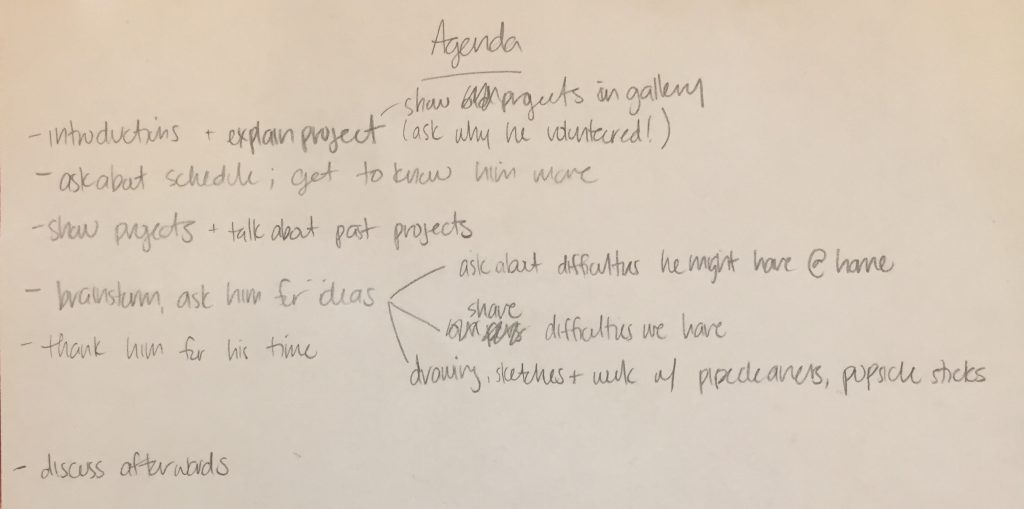
Agenda for the meeting

Matt presenting his Project 2
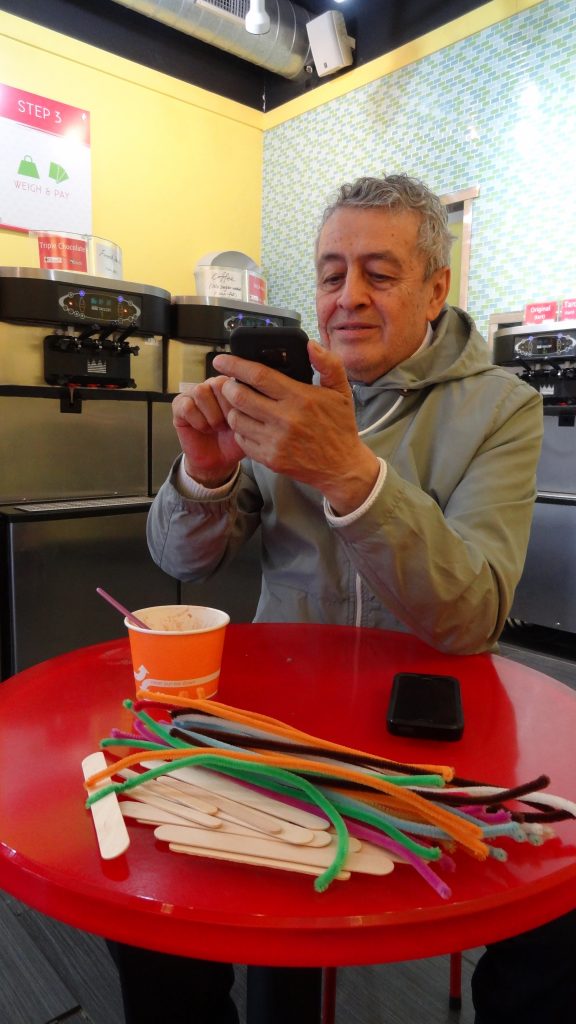
Enrique going through the projects in the course gallery
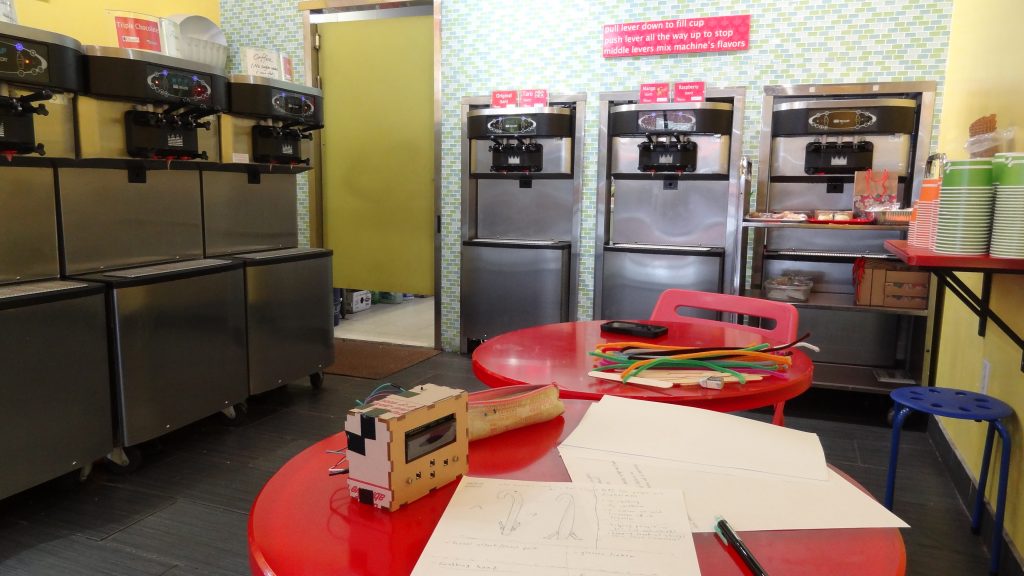
Meeting setup!
We learned a lot over the course of the meeting. Though the main goal of the meeting was to come up with designs for our assistive device, we learned a lot about Enrique, as well. For example, we talked about his family and what he likes to do. Some interesting notes on this aspect of the meeting was learning that he is a civil engineer who both teaches and has written a book.
The other aspect of the meeting was the project ideation. One idea that Enrique really liked was some sort of tracking device for older people so that if they forget where they are or if they get lost, family members can find them. This could be a good project, except Enrique has no need for this because he doesn’t have Alzheimers and he said his family members can always find him with his “electronic leash” (his cellphone). We also learned that a lot of older people don’t want to try new technologies because there are too many and it’s overwhelming for them. They want to stick to the old tech that they are familiar with, but the new tech provides more functionality which they want. So, Enrique thinks that rather than creating new tech for them, creating services would be more beneficial. He said that he would offer a GPS tracking service rather than selling the tracking device because they’d pay for the service! However, since this project is to create a gizmo for Enrique, we’ll have to prioritize ease of use and motivation.
We also talked about how many older people are depressed and feel little motivation to improve their physical and mental health. This might be a difficult task to tackle because motivation stems from different places for different people. Enrique finds it hard to motivate himself to physically exercise, but he is able to find the motivation to mentally exercise by working on his book. Perhaps if we make him something fun and a little competitive, he can motivate his friends to exercise with him. One idea that was brought up in terms of motivation was the possible use of a game or some type of tracking that would encourage people to walk a little more or do a few more mental exercises.
Some other possible designs that were brought up included an inventory system that would help prevent older people from collecting and forgetting about things they have, a compact heart monitor to be used as early detection before going to a hospital, a house information (heat, electricity, efficiency) tracker, and a gripper that mimics a persons hand for ease of use.
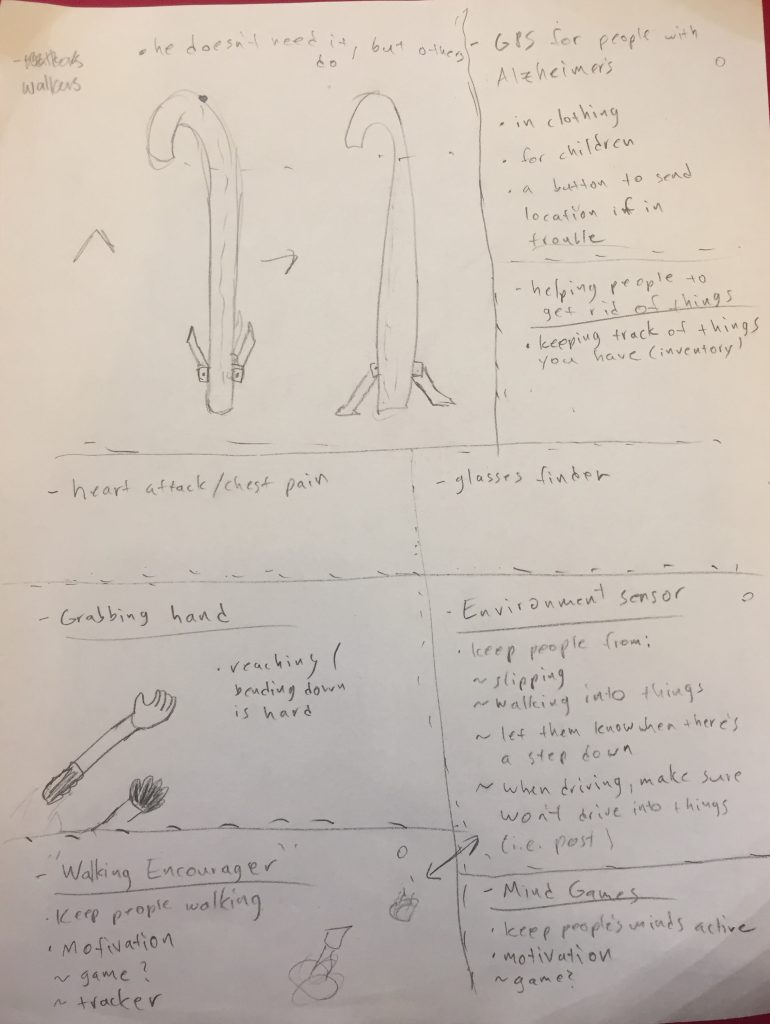
Ideas we came up with during the meeting
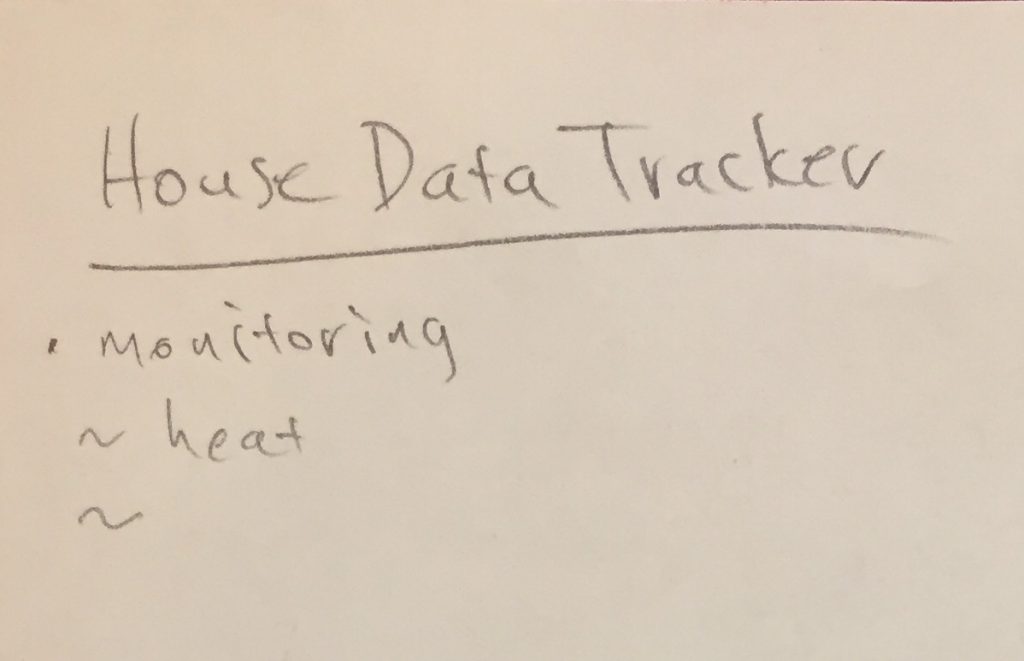
Second page of ideas
Our meeting went very smoothly. It was easy to talk to Enrique, and he had many things to say about our project, Pittsburgh, and life in general. We found that it was hard to follow the agenda exactly because our conversation flowed so well; we didn’t feel the need to prompt him or to push the conversation in a certain direction. We ended up hitting all the bases on our agenda regardless. At first we were a little worried that he thought the project was meant for older people in general because he kept talking about problems that older people had, but then he brought it back to himself with examples of how such a project would be useful for him. Some of the final project ideas, though unique and useful, seemed a bit complex or outside of our scope. If we were to do the meeting again, it might be useful to include a specific section where we talk about daily or household tasks specifically to inspire other types of devices. Overall, however, the meeting was very enjoyable and we were able to create a number of ideas.
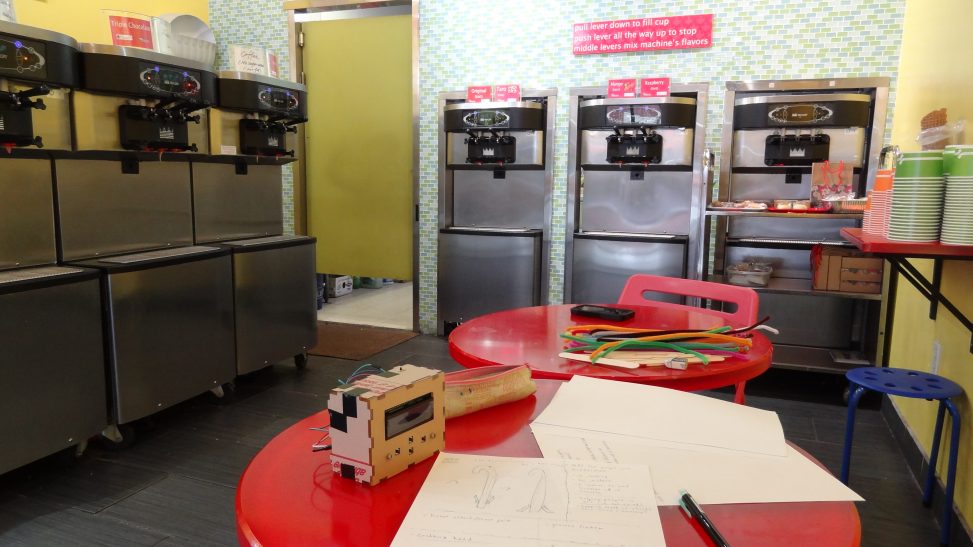
Leave a Reply
You must be logged in to post a comment.